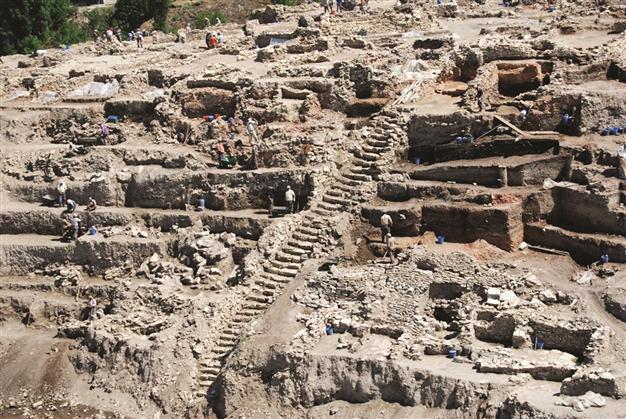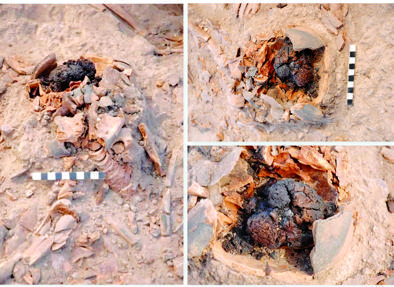Discovery of Bronze Age boiled brains in Kütahya shakes science
Deniz Çiyan ISTANBUL – Hürriyet Daily News

Four preserved brains and seven skeletons were found at Seyitömer, and a fault line was also found nearby along with traces suggesting the wood lying together with the skeletons had been burning.
The discovery of 4,000-year-old preserved brains that were boiled in their own juice is resonating across the scientific world.The finding of the preserved brains, which date back to the Bronze Age, is unique and precious, and will not only shed light on the brain activities of the ancient people but also add to the knowledge of paleontology and forensics, according to Meriç Adil Altınöz, who was among the group of scientists to analyze the brains that were excavated from the Seyitömer excavation site, in Turkey’s western province of Kütahya.
“Although they are not the oldest preserved brains found, it is yet a unique and very precious finding,” Altınöz, an academic at Haliç University’s Molecular Biology and Genetics Department, told the Hürriyet Daily News, adding that only 11 conserved brains had been listed since 1857.
He said four preserved brains and seven skeletons had been found at Seyitömer, and a fault line had also been found nearby along with traces suggesting the wood lying together with the skeletons had been burning. Building on these premises, Altinöz said they assumed that an earthquake had taken place during a fire, burying the bodies deep in the soil and boiling brains in their own juices, thus creating the necessary conditions to preserve the brains.
 Soil’s main elements
Soil’s main elementsHe added that it was not only the high temperatures and anoxia, but also the soil’s main elements that helped conserve the brains for 4,000 years.
“We found hefty amounts of elements, all alkaline, within the soil that the skeletons and brains were buried in. These elements such as sodium, potassium, aluminum and manganese, both drain the water in the tissues and help the brain’s oil to saponify,” said Altınöz. He added that the soil was full of the boron mineral, which is known for its high temperature resistance, and Turkey had the biggest reserves of this mineral in the world.
Besides building resistance against high temperatures, boron also has the effect of sending bugs away, as well as killing microbes and bacteria. “Due to boron’s characteristics, we have specified that this mineral is also a factor in the conservation of the brains, as we have found plenty of boron both in the skeletons and the soil,” said Altınöz.
Contribution to forensics
The Seyitömer tumulus, which is 26 kilometers from the city center, is in the privileged area of a lignite enterprise. Rescue excavations at the tumulus started in 1989 to bring 12 million tons of brown coal to the economy. More than 17,000 findings have been unearthed from the tumulus so far, dating back to between the Roman period and the Bronze Age.
Commenting on how the brains and skeletons would contribute to science and archeology, Altınöz said one of the main contributions would be towards forensics, as the conditions of a human bodies’ burial was important for this branch.

Meriç Adil Altınöz
He also said the brains and skeletons were important in enhancing the knowledge of how ancient people lived – the paleontology science. Anthropology mostly used the skeletons for defining the life conditions at the time but in the case of the findings from Seyitömer, they had gained an insight about the life conditions 4,000 years ago by comparing the elements found in the skeletons, teeth and also the brain.
Stating that DNA analyses were also conducted on the skeletons, Altınöz said one of the bodies was the first of the seven bodies that was confirmed to be a male, both with the DNA extracted from the skeleton’s tooth enamel and with anthropological analysis. “To our knowledge, this is probably the oldest paleo-DNA study that has been conducted in Turkey,” said Altınöz.
He added that preserved organic substances such as seeds, animal remains and human hair had also been found in the excavations, which would shed even more light on the Bronze Age, but as the research was still continuing, he could not give any further details.
















